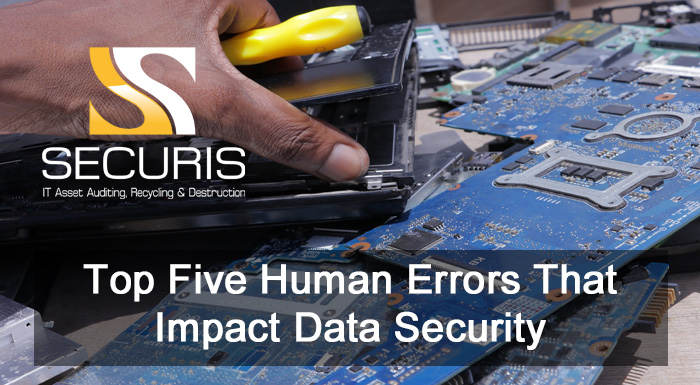While it’s true that switching to digital applications has helped us reduce paper and plastic waste, the cyclical release and degradation of electronics have resulted in unprecedented streams of wasted products. In fact, the United Nations estimates that 50 million tonnes of e-waste are produced each year, worth over $62.5 billion. Yet only 20% of that waste is recycled.
Fortunately, small businesses have the power to make a significant difference by enacting a change in their business habits. We’ll cover a few ways that organizations can reuse and recycle their yearly e-waste.
What is E-Waste?
Although it sounds fairly straightforward, it can actually be confusing as to what can be considered e-waste. Encyclopedia Britannica defines e-waste as “electric and electronic equipment that have ceased to be of value to their users or no longer satisfy their original purpose.” That can include anything from a defective kitchen appliance to outdated computers.
The Dangers of E-Waste
E-waste is toxic to humans. When improperly disposed of, e-waste materials can be deadly. Components may have chemicals that, when exposed, can be highly flammable. They may release gases that can cause respiratory issues or cause health issues that even lead to cancer.
E-waste is a missed opportunity. Each device has microchips and materials that can be repurposed for new devices. When it is simply thrown away, the materials are lost, and the chance to reuse is squandered.
E-waste is harmful to the environment. Since e-waste isn’t biodegradable, it stays around on earth long after being thrown away. This leads e-waste to contribute to liquid waste, air pollution, habitat destruction, and toxic landfills.
Tips for E-waste Recycling
Now that you know what’s at stake, what can your small business do about it? Here are a few solutions:
Return to seller
These days, big companies like Apple and Best Buy offer programs that will accept e-waste to be recycled. Once accepted, these items will either be repaired and reused or stripped down for parts. Last year alone, Apple refurbished over 7.8 million devices and prevented 48,000 metric tons of e-waste.
Switch to the cloud
With ever-expanding cloud storage available to everyone, USBs and discs are becoming obsolete. Why use a finite storage system when you can have terabytes of space online? Switching to the cloud is a preventative action- meaning you won’t need to recycle or throw anything away because it’s all saved digitally. Google Cloud and Dropbox have become popular consumer cloud choices.
Donate or recycle
If the device isn’t totally useless, take matters into your own hands and reuse or donate them. While your business may no longer find use in an old printer, other companies may be able to find a new home for the device. Visit the EPA’s Electronics Donation and Recycling page to find out where you can send your old devices. Alternatively, visit Securis’s IT recycling services page for a more straightforward option.
Destroy data devices
Work with sensitive information in your company? Then it’s totally understandable if you have reservations about recycling your devices. Instead, hire a trustworthy and reputable company to destroy the data so it isn’t accessed by the wrong people. Learn more about the best way to destroy hard drives, cellphones, and other storage devices.
Cultivate a greener culture
Change starts from the top down. If you want your business to start reducing e-waste, make it a company-wide policy. Set quantitative, attainable targets for your leaders to hit during the year, like reducing e-waste by 30%. Hold people accountable each month, even conducting regular check-ins. Finally, reward people for striving towards a more sustainable business process.
Building a Brighter Tomorrow
More than ever before, companies hold greater responsibility and influence in the course of reducing e-waste. It’s true that a majority of e-waste is derived from corporate activities, it’s also true that much of the change taking place is a result of those same companies.
So don’t just sit back and leave it to someone else- take responsibility and do your part. Retool your company culture to tackle this issue head-on. Start taking inventory of unused devices and seeing how they can be repurposed or recycled. It’s a world shared by everyone, including our future generations. It’s time we do what we can to give back and take care of the planet.
Learn more about how Securis can assist your business in responsible IT removal and recycling today.

